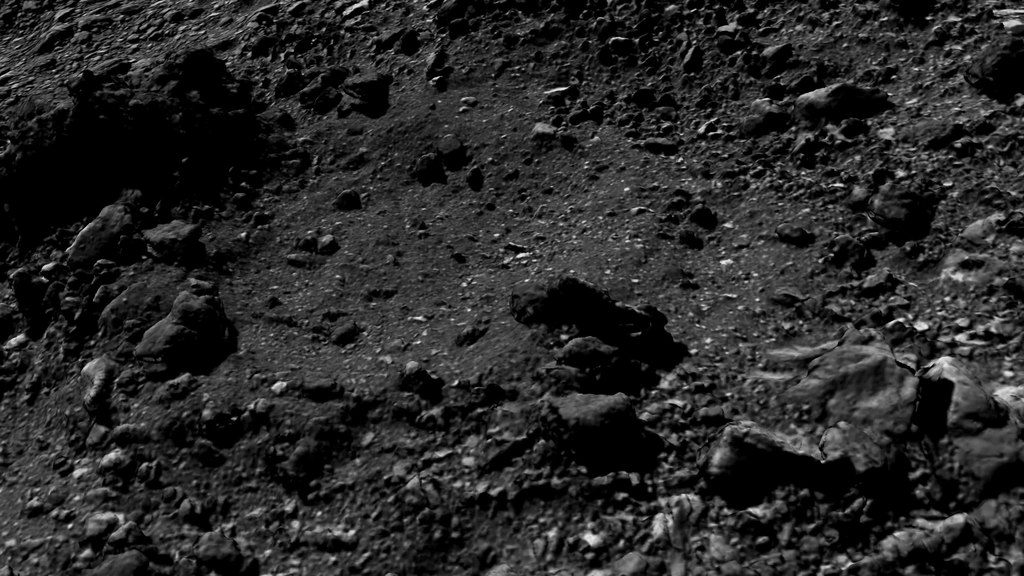The DART mission demonstration showed that a kinetic impact could deflect a dangerous asteroid, should it ever be on a collision course with Earth.
Now, a new study, published in The Planetary Science Journal, shows that the impact altered not only the asteroid's movement, but also its shape.

DART's target, the asteroid Dimorphos, is a moon of Didymos, a larger asteroid that orbits relatively close to Earth.
Before the impact, Dimorphos was a roughly symmetrical "oblate spheroid" - like a squashed ball that is wider than it is tall.
With a well-defined circular orbit and at a distance of about 1189 meters from Didymos, Dimorphos took 11 hours and 55 minutes to complete one lap around its "big brother".
"When DART made the impact, things got very interesting," explains Shantanu Naidu, a navigation engineer at NASA's JPL in southern California, who led the study.
"Dimorphos' orbit is no longer circular: its orbital period - the time it takes to complete an orbit - is now 33 minutes and 15 seconds shorter. And the whole shape of the asteroid has changed, from a relatively symmetrical object to a 'triaxial ellipsoid' - something more like an oblong watermelon."
Damage report on Dimorphos
Naidu's team used three sources of data in their computer models to deduce what had happened to the asteroid after the impact.
The first source was on board DART: the spacecraft captured images as it approached the asteroid and sent them to Earth via NASA's DSN (Deep Space Network).
These images provided measurements of the distance between Didymos and Dimorphos, while also assessing the dimensions of both asteroids just before impact.
The second source of data was DSN's GSSR (Goldstone Solar System Radar), located near Barstow, California, which reflected radio waves from both asteroids to accurately measure the position and speed of Dimorphos in relation to Didymos after the impact.
The radar observations quickly helped NASA conclude that DART's effect on the asteroid far exceeded minimum expectations.
The third and most significant source of data: ground-based telescopes around the world that measured the "light curve" of both asteroids, i.e. how the sunlight reflected from the asteroids' surfaces changed over time.
By comparing the light curves before and after the impact, the researchers were able to find out how DART altered Dimorphos' movement.
As Dimorphos orbits, it periodically passes in front of and then behind Didymos. In these so-called "mutual events", one asteroid can cast a shadow on the other or block our view from Earth.
In both cases, telescopes register a temporary decrease in brightness - a drop in the light curve.
"We used the times of this precise series of dips in the light curve to deduce the shape of the orbit and, because our models were very sensitive, we were also able to figure out the shape of the asteroid," said Steve Chesley, principal investigator at JPL and co-author of the study. The team discovered that Dimorphos' orbit is now slightly elongated, or eccentric.
"Before the impact," continued Chesley, "events occurred regularly, showing a circular orbit. After the impact, there were very slight time differences, showing that something was wrong. We never expected to get this kind of precision."
The models are so accurate that they even show that Dimorphos swings back and forth as it orbits Didymos, Naidu said.
Orbital evolution
The team's models also calculated the evolution of Dimorphos' orbital period. Immediately after the impact, DART reduced the average distance between the two asteroids, shortening Dimorphos' orbital period by 32 minutes and 42 seconds, to 11 hours, 22 minutes and 37 seconds.
Over the following weeks, the asteroid's orbital period continued to decrease as Dimorphos lost more rocky material into space, finally settling at 11 hours, 22 minutes and 3 seconds per orbit - 33 minutes and 15 seconds less than before the impact.
This calculation is accurate to 1.5 seconds, Naidu said. Dimorphos now has an average orbital distance to Didymos of approximately 1152 meters - about 37 meters closer than before the impact.
"The results of this study agree with others that are being published," said Tom Statler, principal scientist for small Solar System bodies at NASA headquarters in Washington.
"To see separate groups analyzing the data and coming to the same conclusions independently is a mark of a solid scientific result. DART is not only showing us the way to an asteroid deflection technology, it is also revealing fundamental new knowledge about what asteroids are and how they behave."
These results and observations of the debris left behind after the impact indicate that Dimorphos is a "rubble pile" type object, similar to the asteroid Bennu.

ESA's Hera mission, scheduled to launch in October 2024, will travel to this pair of asteroids to carry out a detailed study and confirm how DART altered Dimorphos.





